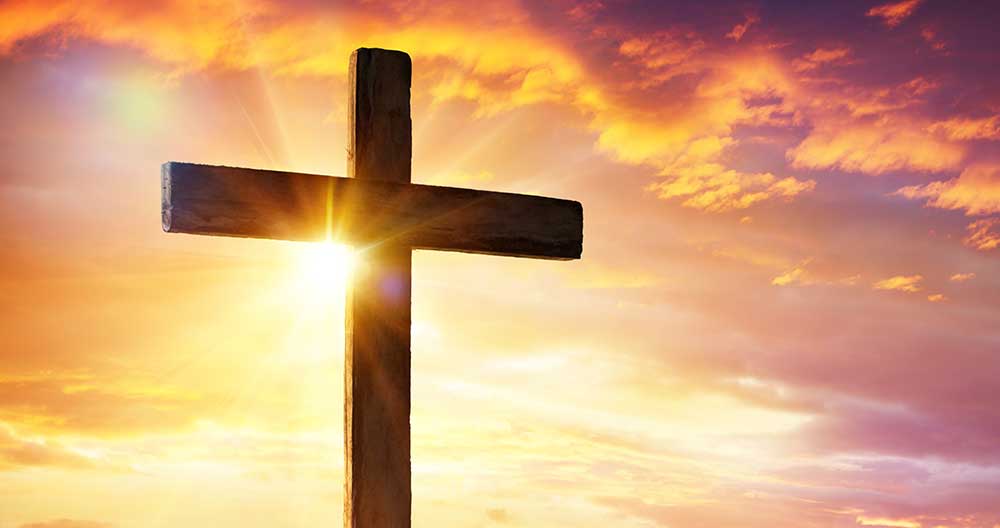
The Resurrection
Today we celebrate Holy Thursday, also called Maundy Thursday in commemoration of Jesus washing the feet of his apostles (Maundy) before the Last Supper. Tomorrow, we will observe Good Friday, a solemn day of remembrance in which we recall that Jesus died on the cross for our sins. On Sunday, we will celebrate Easter, the most sacred day in Christianity. It is on Easter that we are reminded that those baptized into the faith will share in a resurrection to a new life and a new beginning.
The importance of the Resurrection is not to be understated. It is the very foundation upon which the Church is built. However, while most Christians understand that Jesus rose again on that third day, many do not realize how many times—and to whom—he appeared on Resurrection Sunday. Now is a good time to review those miraculous appearances which began that Sunday morning.
Appears to the Virgin Mary
The New Testament does not mention Jesus appearing to the Virgin Mary after the Resurrection. She is startlingly absent from the Gospels that mention the women going to the tomb early Sunday morning. How do we account for that absence? Mary had stayed by Jesus’s side throughout his passion, crucifixion, and entombment. How then, are we to believe that she would not have been with the other women on Sunday morning, especially when Jesus had declared that he would “rise again on the third day?”
Her absence is understandable when we consider that Jesus had already appeared to Mary. The relationship between mother and son was extraordinarily close, and it makes sense that Jesus would have wanted to appear to Mary first, not only to relieve her grief and fear, but also to remove any doubt she might have had as to whether his interpretation of the scriptures regarding himself had been correct.
There is a tradition that Jesus did appear to Mary first, evidenced especially by the existence of a Chapel of the Apparition of Jesus to Mary in the Church of the Holy Sepulcher in Jerusalem. If we hold to this tradition, then Jesus’s appearance to Mary was no later than 5:00 a.m. The timing of his appearance to Mary would place it at the time of the guards’ discovery of the empty tomb.
Having seen her son, Mary could excuse herself from going to the tomb. And this would have made sense. It would have been difficult for Mary to pretend not to know what the women would find. In addition, she could not have told anyone of Jesus’s resurrection without depriving the women at the tomb of the honor of bearing the message to the men. By not making herself a public witness at that time, Mary also avoided subjecting her own credibility to attack, as was done to all the women who told what they had seen and were disbelieved.
Appears to Mary Magdalene
The women who went to Jesus’s tomb included Mary Magdalene; Mary, the mother of James and Joseph; Salome, the mother of James and John; Joanna; and “the other women with them” of an unknown number. While the gospels of Matthew, Mark, and Luke differ in their accounts of what the women found—in Matthew an angel was sitting on the stone; in Mark, a young man dressed in white was sitting in the tomb; and in Luke, two men in dazzling apparel were in the tomb—what is common to these three accounts is that the women saw angels and ran back to the men to share the news that Jesus’s body was no longer in the tomb.
Mary Magdalene ran to Peter, who was with John. She told them that she and the other women did not know “where they have laid him.” It is interesting to note that, at this point in time, Mary Magdalene did not understand the significance of what she had seen at the tomb. If she had believed and understood what the angels had said—that Jesus was risen—she would not have been concerned with Jesus’s body. Like Thomas, she would remain in a state of incredulity until her own personal epiphany.
After Peter and John left the tomb to return to town, Mary Magdalene lingered behind. John tells us that as she stood weeping outside the tomb, she stooped to look into the tomb and she saw two angels in white. When they asked why she was weeping, she replied, “Because they have taken away my Lord, and I do not know where they have laid him.” She then turned around to find Jesus standing there, although she did not realize it was him. He said to her, “Woman, why are you weeping? Whom do you seek?” Thinking him to be the gardener, she replied, “Sir, if you have carried him away, tell me where you have laid him, and I will take him away.” Then Jesus spoke her name, and Mary Magdalene said to him, in Hebrew, “Rabboni!”
Imagine the rush of emotion that must have enveloped Mary Magdalene when she recognized Jesus and suddenly realized that he had risen from the dead. This body before her was the same body she had helped entomb only thirty-eight hours earlier. Now there he was. Full of joy, Mary Magdalene and one or more other women went to the disciples and told them, “I have seen the Lord” and gave them his message. The honor accorded to Mary Magdalene, as the first disciple to whom Jesus appeared, was the commencement of the elevation of the dignity of women in the eyes of the Christian world. By appearing to her before any other disciple, Jesus elevated the status of women for all time above the place they held in both Jewish and pagan societies.
Appears to Peter
Sometime that Sunday afternoon, Jesus appeared to Peter. It is highly significant that Peter was the first apostle to whom Jesus appeared. By doing so, Jesus confirmed the primacy of Peter among the apostles. Although he was not the first disciple whom Jesus had selected to join him, Peter was, along with James and John, the three most trusted disciples; he belonged to that inner circle that Jesus took with him to witness the raising from the dead of Jairus’s daughter, to witness his Transfiguration, and to be with him in the Garden of Gethsemane.
Peter was the first to publicly proclaim Jesus to be the Messiah, and in response, Jesus had stated that he would found his church upon this rock (Petrus), thereby giving Peter the authority to bind and loose on earth. Peter’s primacy among the three, however, is implied by the angel at the tomb who told the women to “go, tell his disciples and Peter…,” thus singling out Peter. In his subsequent Resurrection appearances, Jesus would further grant Peter authority over the other apostles, but this was the first post-Resurrection recognition of the primacy of Peter.
Appears to Cleophas and Simon
Later in the day, Jesus appeared to two disciples on the road leading out of Jerusalem. Cleophas, the brother-in-law to the Virgin Mary, and his son, Simon, were headed to Emmaus, seven miles north of the holy city. It was about a three-hour walk, and by the time a stranger overtook them and fell into conversation with them, it was approximately 4:30 p.m.
The stranger was just that: unknown to Cleophas and Simon. They did not immediately recognize Jesus, which is not altogether unusual since Mary Magdalene had initially thought Jesus to be a gardener when she had seen him at the tomb. This would be the case in Galilee as well, when he appeared to the disciples on the beach. In his post-Resurrection state, Jesus could appear and vanish as he saw fit—at times in the form of other men until he chose to make himself known.
Appears to the Disciples
Later that evening, as the ten apostles (Thomas was not present) were discussing Jesus’s appearances to Peter and Cleophas and Simon, Jesus suddenly appeared in the upper room. He greeted the disciples, who were understandably startled and somewhat frightened. Jesus allayed their fears by showing his hands and feet as well the wound in his side. However, he also “upbraided them for their unbelief and hardness of heart, because they had not believed those who saw him after he had risen.”
Once the disciples understood that it was indeed Jesus and not a ghost, Jesus renewed his teaching. “‘These are my words which I spoke to you, while I was still with you, that everything written about me in the law of Moses and the prophets and the psalms must be fulfilled.’ Then he opened their minds to understand the scriptures, and said to them, ‘Thus it is written that the Christ should suffer and on the third day rise from the dead, and that repentance and forgiveness of sins should be preached in his name to all nations, beginning from Jerusalem.’”
The Five Appearances
Thus, on Resurrection Sunday Jesus was seen on five separate occasions: first, presumably by Mary; by Mary Magdalene and one or more other women; by Peter; by Cleophas and Simon on the road to Emmaus; and by ten of the eleven apostles. What is most important to remember of Jesus’s post-Resurrection appearances is the subject matter of his discourses to his disciples. Most of these appearances give no description of why he came and what he wished to communicate. Yet he was not making these appearances just to prove that he had risen. The account of his conversation with Cleophas and Simon is the first describing the substance of his post-Resurrection teaching. The purpose of his appearance was “to interpret to them in all the scriptures the things concerning himself.” He gave the disciples an exegesis of the “scriptures” (the Old Testament), which was the basis of Peter’s address to the crowd on Pentecost.
Jesus’ teaching to the disciples during his Resurrection appearances, for the most part unrecorded in the New Testament, constitutes the foundation of “the Tradition” of the Church and the teaching authority of the apostles and their successors, the bishops.
